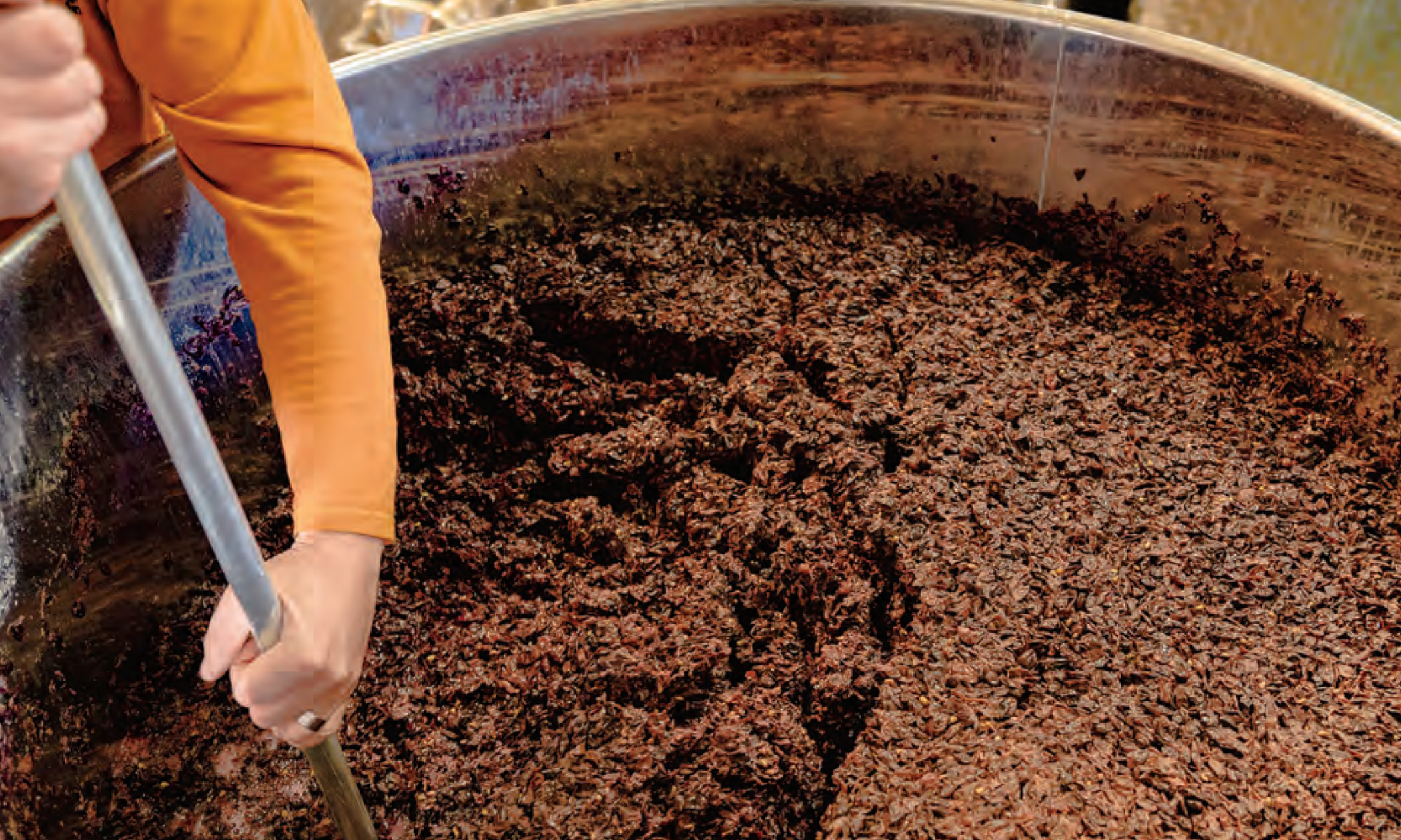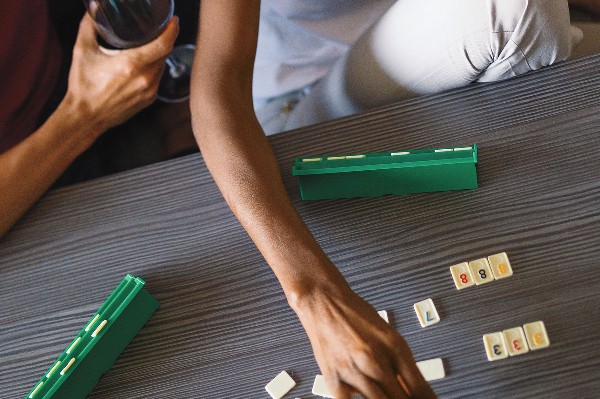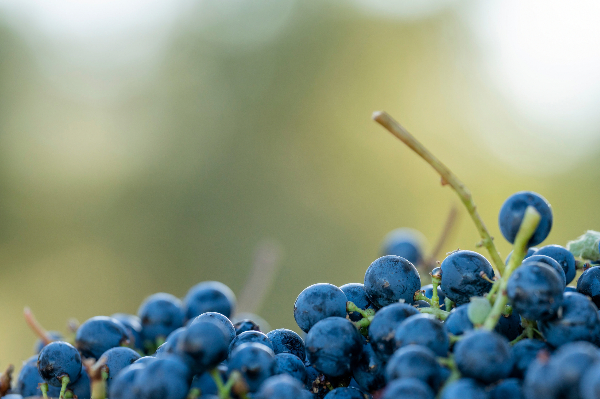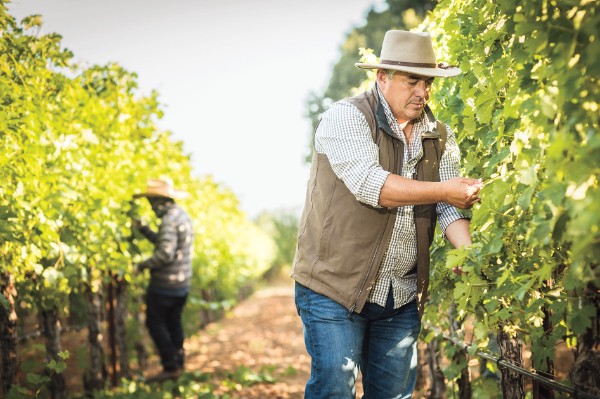Remarkable technical advances have been made in the Napa Valley wine industry, reducing labor-intensive steps in the winemaking process or making certain processes more efficient and responsive to a winemaker’s intent. These innovative, or more modern, approaches are embraced by vintners large and small. Yet some vintners hold fast to time-honored, traditional methods that have been used for decades, even centuries, for any number of reasons, giving weight to the adage that what’s old is new again.
We asked Napa Valley winemakers why they choose more modern or more traditional approaches for several key winemaking steps.
Fermentation
Many different vessels can be used to ferment wine, from ancient amphorae to modern stainless steel tanks. The choice (its composition, whether it controls temperature, imparts flavor or allows in oxygen, etc.) influences the final wine style.
More Traditional: Amphorae
These large pottery containers, which narrow at the mouth and allow for a stopper, were used by the ancient Greeks, Romans and others to make and transport wine. Their use today, by winemakers seeking to develop even greater complexity and more nuances from their wines, brings this very ancient tradition back to the forefront.
Winemaker Aaron Pott explains, “I am using amphorae because I wanted to find a way to age wines in an oxidative environment without adding wood tannin or having the flavors and aromas of wood. Clay gives me more or less the equivalent of the air interaction that you find in barrels without the masking effects of the wood. I love how they respect the fruit and give us unparalleled precision and focus on the terroir.”
More Modern: Stainless Steel Tanks
Stainless steel tanks are ubiquitous in Napa Valley wineries today. These modern vessels allow for temperature control and ease in cleaning and help maintain bright fruit flavors in the wines.
Kristin Belair, winemaker at Honig, a producer of several Sauvignon Blanc styles, notes, “Sauvignon Blanc lends itself to a variety of fermentation techniques, giving a winemaker a broad palate to choose from. Stainless steel itself does not impart any flavor into the finished wine, but these tanks are typically outfitted with a means of temperature control. By employing different yeast strains and fermenting at warmer (60-75 F) or cooler (45-55 F) temperatures, one can influence the final flavor and texture of the wine, enhancing and making the flavors more complex.”
Breaking the Cap
When a red wine ferments, the grape seeds and skins float to the top of the tank because of the heat and carbon dioxide produced during fermentation, creating a hard layer, or cap, at the top of the tank. Yet winemakers want to keep the skins, which add color, tannins and flavors to the wine, mixed in with the fermenting juice as it turns into wine.
More Traditional: Manual Punch-downs and Pump-overs
The winemaker either stands above a macro bin and breaks the cap manually with a large punch-down tool (a pole with a flat end used to depress the skins and seeds into the juice below) or utilizes a set of pumps and hoses. Both options require some serious manual labor, time and great effort.
Cain Vineyard & Winery on Spring Mountain conducts punch-downs and manual pump-overs. Winegrower Chris Howell explains, “On their own, if not too cold, the berries will slowly dissolve their own pulp and skins, releasing perfume, pigment and tannin into the juice. Thoughtful, appropriately timed punch-downs and pump-overs enhance the process. Every tank is different. Like all good chefs, we taste as we go, searching.
More Modern: Automated Pump-overs
With technologically advanced automatic pump-overs, each tank is equipped with a mechanism that breaks up the cap, controlled by the push of a button or preprogrammed to start and finish while the cellar crew is catching up on some well-deserved sleep during the busy harvest season.
Jaime Araujo, proprietor at Wheeler Farms/Accendo Cellars, states, “We automate the pump-over system for five primary reasons: timely execution of cap management, to minimize cross-contamination between tanks, reduce water use, reduce cleaning chemical use and for labor savings.”
Sorting
Premium winemakers want to ensure that any undesirable grapes (green, too small, etc.) and MOG (material other than grapes, i.e., leaves) do not go into the fermentation vessel along with the desired, newly harvested grapes. This can be done by hand or with advanced optical sorters, allowing only grapes that meet preprogrammed sizes, weights and other criteria to pass along the sorting table.
More Traditional: Hand Sorting
Humans are equipped with the perfect grape sorters: two hands! But this traditional method of sorting out less desirable grapes and MOG takes a lot of time and labor. Generally, numerous crew members stand on either side of a moving conveyor belt and vigilantly make their removals as the grapes quickly pass by.
Cathy Corison, owner and winemaker at Corison Winery, explains simply, “We hand sort because Corison Winery is too small to afford an optical sorter. Additionally, I think the direct human touch is important on a level that we can’t logically explain.”
More Modern: Optical Sorters
Optical sorters can handle 10 to 12 tons an hour, saving time when it comes to the sorting process. While this is an obvious advantage when the winery receives larger volumes of grapes, these sorters are used by Napa Valley’s smaller wineries as well for numerous reasons.
Megan Gunderson, director of winemaking at Hall Family Wines, explains, “Hall was an early adopter of optical sorting technology. We’ve found that this technology enables us to be more efficient while sorting and gives us pristine fruit for the fermentation process, resulting in wines that are fruit driven and precise.”
Yeasts
Yeasts, needed to convert the grapes’ sugars into alcohol, naturally exist in the vineyard. Once the grapes are brought into the cellar, fermentation can take place using these native yeasts or a winemaker can purchase a specific strain or strains of yeast from a supply store.
More Traditional: Native Yeasts
Winemaking is sure to have started with a surprising fermentation of natural yeasts: fruit left unattended, which started to ferment. These native yeasts will be unique to the vineyard or cellar where they are found, and a very traditional way of making wine.
Winemaker Jacky Young at Young Inglenook explains, “Our goal is authenticity. We believe place makes the wines as well as the winemaker. Just as we grow the grapes for our wines on our estate, we use our indigenous yeasts to ferment those wines. Those yeasts are an integral part of the complex juxtaposition of chemistry, taste and art that makes our wines uniquely ours.”
More Modern: Commerical Yeast
Many winemakers deem their choice of yeast strain(s) to be one of their most important decisions. Commercial yeasts provide control during the fermentation process, influencing fermentation time, wine flavors and much more. There is always an innovative selection of yeasts to choose from, such as ones that bring out grapefruit character in a Sauvignon Blanc, or a strain that can handle higher alcohols in a wine.
Kent Jarman, the winemaker at Dos Lagos Vineyards, states, “Commercial yeast strains have improved dramatically over the years and there are some very special selections ideal for our type of fruit to maximize delicate aromatics and aid in mid-palate mouthfeel. Matching yeast strains to our site and the style of wine we wish to create gives us another tool in our toolbox in the play between Mother Nature and winemaking creativity.”




